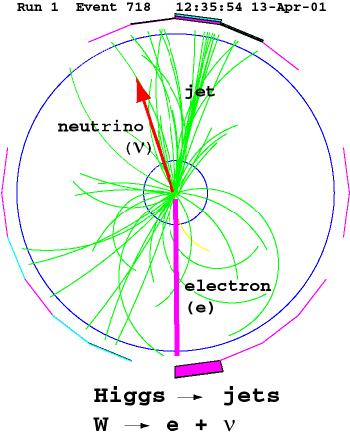Getting to Higgs
Looking for Suspects . . . er Candidates
|
Two huge physics task forces, CDF and DZero, are after the Higgs at Fermilab. They will be looking for events with b quarks and Ws as candidate Higgs events. More about candidate events. To learn more about Higgs, check out: Politics, Solid State and the Higgs by David Miller, and the cartoon version. Also good reading: The Search for Higgs in Beamline, March 2001. You and your classmates will join the particle hunt by doing a sweep for evidence through CDF data to learn how to identify bs and Ws. You will be looking for minimum or "threshold" values for certain parameters. Also, you will learn something about the data analysis that must be done after the candidate events are identified to determine the value of the mass. Be sure to keep notes on all your work.
| ||||||||
| ||||||||
